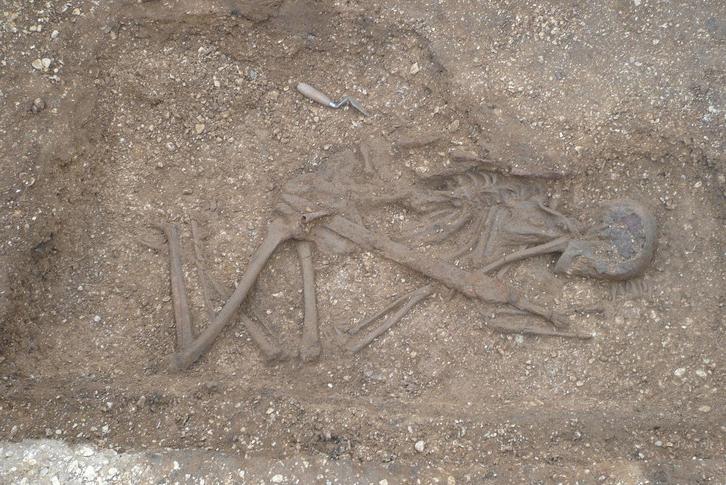Around 150 skeletons buried in 75 graves have been discovered in an Iron Age cemetery near the town of Pocklington in East Riding, Yorkshire, in what is undoubtedly one of the most significant recent finds in Britain. They are the latest discoveries from archaeological sites in the area that reveal a culture whose burial traditions suggest links to the ancient Gaulish people of northern France.
At Pocklington, the most striking of the recent finds is the grave of a young man, probably a warrior, buried with an iron sword between 2,000 and 2,500 years ago. What is remarkable is the presence of five spearheads, whose position shows unequivocally that they had been thrown at the corpse itself. Most of the burials were without grave goods, though one female was buried with a fine brooch similar to examples found on the continent.
There are around 23 so-called “speared corpse” burials in eastern Yorkshire, with between one and 14 spear points found in the grave. Was this the equivalent of a rifle volley fired over a military burial as in modern times? Were the swords thrown into the grave as a mark of respect by fellow warriors? Or might it even represent a Dracula-style impaling after death to prevent the dead from rising?
This tradition of speared corpses, burial in square barrows—a small, square, ditched enclosure surrounding a central grave covered by a low mound—and chariot burials are traditions clustered in eastern Yorkshire with only a few outliers. The closest parallels to the square barrows found in East Yorkshire are in north-eastern France and Belgium. Although there are subtle differences in the form of burial and grave goods, some form of continental link seems undeniable.
